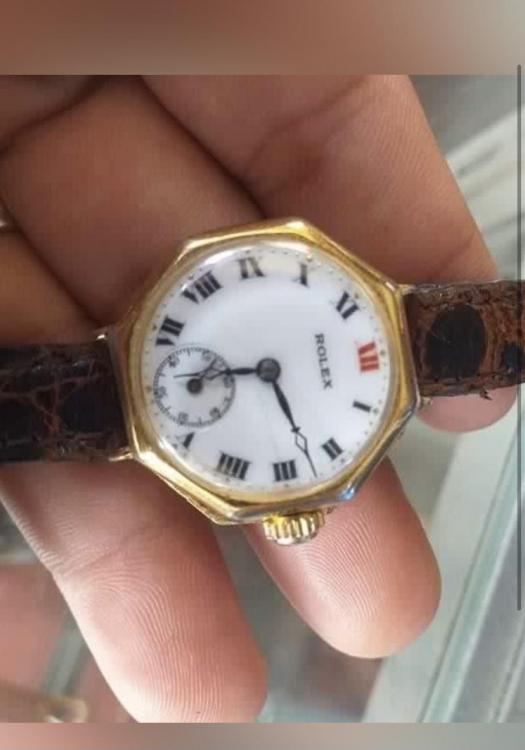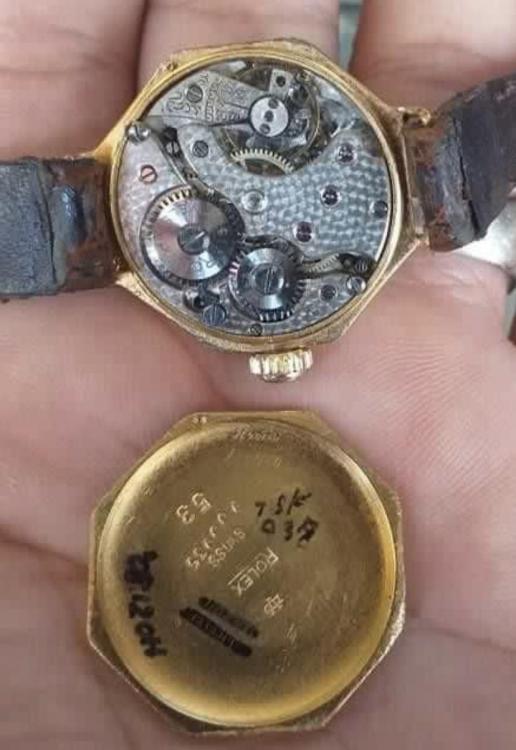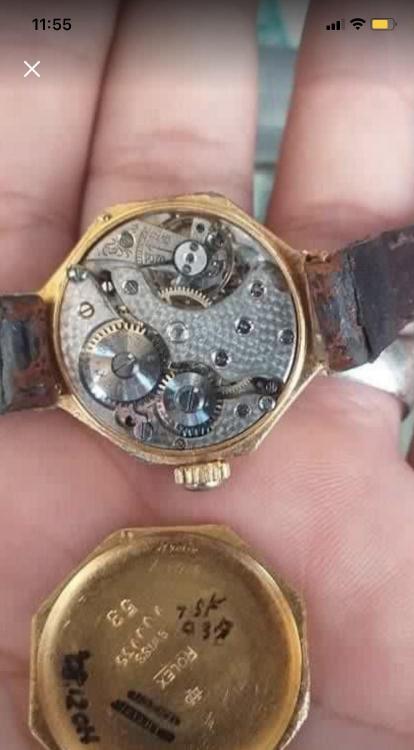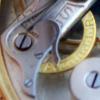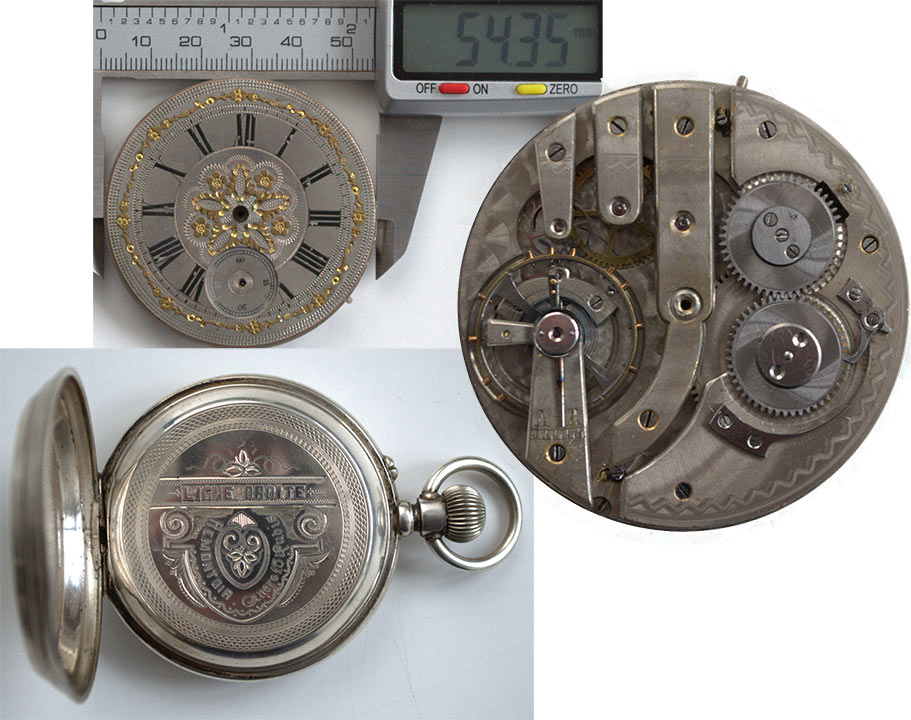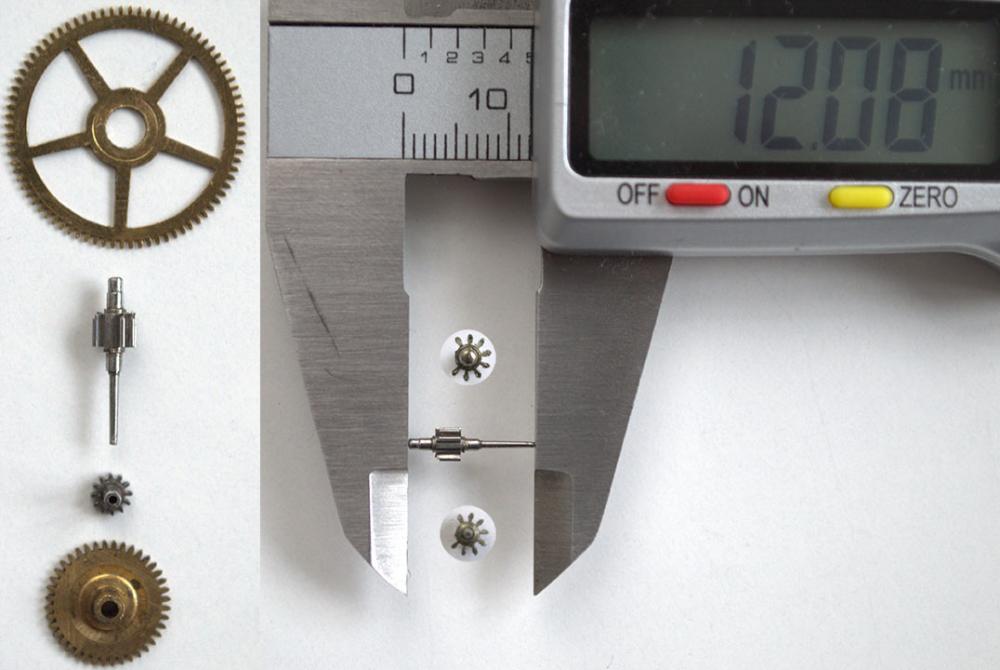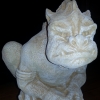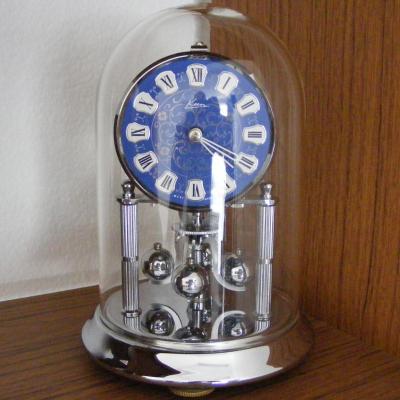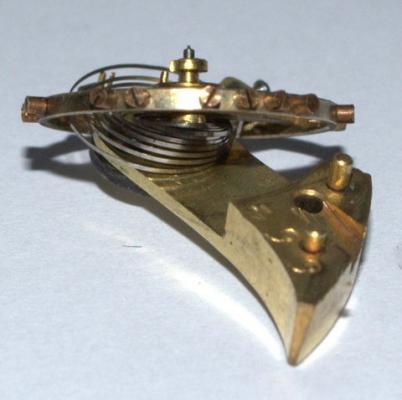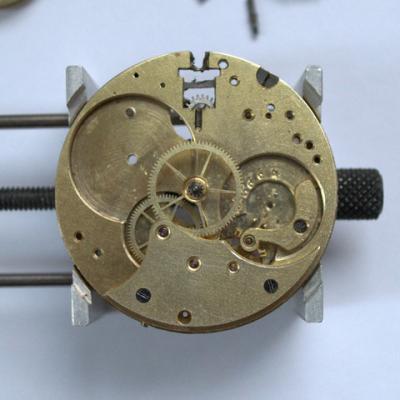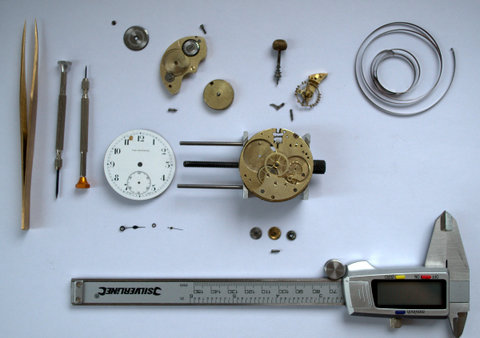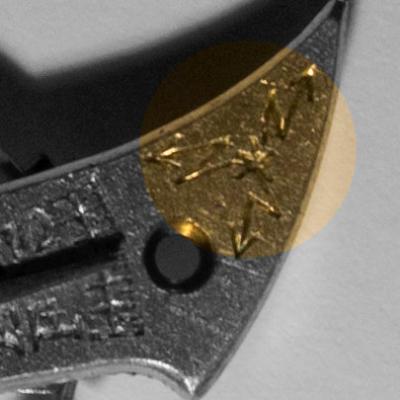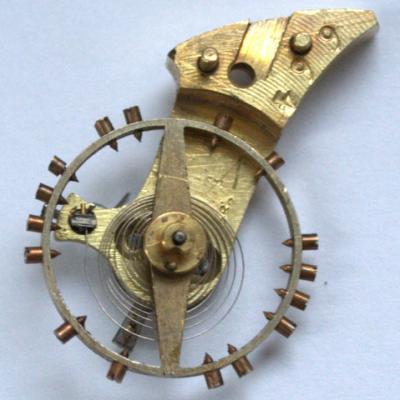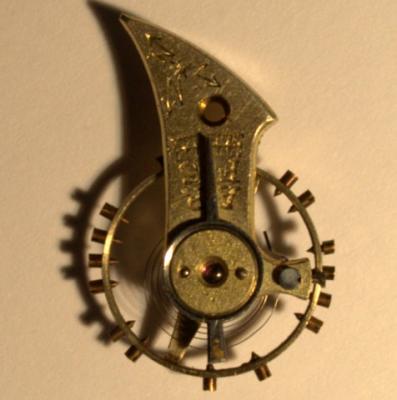Search the Community
Showing results for tags 'antique'.
-
So, while waiting to fix the Seiko misadventures of my youth, I went looking for broken pocket watch movements on ebay. (I had read somewhere that a good way to start is clocks for their larger parts, then pocket watches as an intermediate stage and then wristwatches for the smallest movements and parts.) After losing several auctions for promising non-working pocket watches I found a New York Standard possibly "Model 11". It was mostly disassembled and there is much rust/corrosion. I think it's missing at least the clutch, for example. It needs new hands, but this isn't impossible. The main problem here is the rust. It looks like someone disassembled this watch on purpose but I don't know how it came to be so rusted. (Maybe it was parted out? It would be nice to have a tech book on this watch.) So I've been looking over rust removal methods. One video says to use water and baking soda with a brush. Many advocate the use of a "solvent" without being very specific. I have a .pdf of a 1940's War Dept. Technical Manual for watch repair. (you know, for when you're in a trench and taking fire and need to know what time it is but your watch is broken) Among other things this book recommends using pith and I think maybe pegwood as well as solvents or the like that are only referred to by what I think are military requisition numbers. My circumstances are such that I can't afford a sonic jewelry cleaner, and I don't have a dedicated work area and limited storage for tools. The baking soda method appeals to me but I think this works mostly by abrasion, the baking soda being gritty. I'm afraid this could damage smaller parts. I could upload pictures if anyone's interested.
-
Dear fellow watch enthusiasts, Here we have a senior patient whose only ailment is a broken centre wheel pinion (two of its ten leaves are missing). Please have a look by yourselves. The watch is a 1890s Straight Line 15 Ruby Lever Winder ('Ligne Droite Remontoir Ancre 15 Rubis') with a very large 24 ligne (54 mm) movement. The dial maker's ('Widmer') is the only maker's mark, concealed on the dial's back. My theory is that the damage to the pinion was caused by the sudden release of the barrel. A broken mainspring was lodged inside with unusual thickness and length (0.27 mm, 74 cm) for this barrel size (21 mm), which probably made it subject to too much tension. The replacement mainspring (0.23 mm, 64 cm) that has now been fitted is more suitable according to my calculations. The pallet fork and the impulse jewel were disengaged, but this was easy to correct (the balance wheel was repositioned as shown in the photo), and the going train is now back to working condition except for the centre wheel pinion. I took some additional measurements that could become useful: Centre Wheel outer Ø: 15.52 mm. Centre Wheel inner Ø: 3.33 mm. Centre Wheel arbour length: 12.08 mm. I would ideally like to obtain the spare parts to fit myself. I know some of you will say this is too difficult or too costly or not worthy. However, I also know there must be some connaisseurs out there who will empathise with my urge as a learning collector and watchmaker and hopefully will provide me with some practical guidance. I realise my interest in antique pocket watches may not be shared by a majority of members of this forum. In that case, if there is any other online forum or club that you can recommend then that would also be appreciated. Perhaps you know someone in the area of London who can help. Many thanks in advance for your valuable comments.
- 7 replies
-
- 1
-

-
- pocket watch
- swiss
-
(and 2 more)
Tagged with:
-
Here is the latest addition to my watch collection. Whilst raking through a rummage box on a car boot stall in Leicestershire this morning, this sorry looking object caught my eye. Not too pretty.... At this point I was still not sure what I had picked up but curiosity got the better of me so I asked the price. £2 quickly changed hands and it was mine. And here is what I found. So here is what I think I know; 1. Old 2. Verge escapement with a fusee 3. Missing hair spring and fusee chain 4. Probably ought to have some sort of regulator for the balance which is notable by its absence 5. Appears to only have an arbor for an hour hand, no minutes 6. English (London) 7. James Pigney? can find no reference to the name 8. Light pressure on the fusee cone and even without a hair spring she runs!!!! This one is going to be quite a challenge and an education to do something with. Would anyone care to have a go at filling in my missing information or correcting my misinformation. I would love to know something of its history. pspbrwse.jbf
-
Dear friends, I had the chance of experiencing first hand the antique watch fair held at Brunel University (Uxbridge, London) last Sunday 6 September. This event does not seem to be widely advertised, so perhaps reporting it here will alert other fellow enthusiasts. Let's begin with the location. For those living closer to Brunel University, the official fair's website still announces that the next event (13 December) will be held at the Sports Hall. This information is not very precise, as the university campus has several sports halls, some quite far apart. The actual venue is the basement of the Sports Centre. This is the building housing the 'More Energy Brunel Fitness Centre' and here is a map for access. The last thing you want is wandering lost on a Sunday morning. The fair run from 9 am to 2.30 pm but I only needed over an hour to thoroughly check all stalls and I recognise this is considerably more than any returning visitor would require. The number of stalls was far less than the 100 mentioned in the official website. In fact, the number of sellers was probably below 50. For those closer to Birmingham, I understand the Midland fair is bigger in size and it also occurs more frequently (five times a year against three times only). Access to the fair is granted prior payment of a fee which decreases every two hours. So from 9:00 to 11:00 the fee is £5, but from 11:00 to 13:00, £2.50, and, finally, from 13:00 to 14:30 it is £1. My view is there is no need to rush in early. After all Sundays are for slacking. I would not be too concerned about someone else being there first as every collector has a different eye and a different target. Once you pay, they stamp your hand like they do in night clubs and you can get in. Inside there was no disco ball but luckily for me most of the stalls had some pocket watches to train my eye. There were less clocks and less wristwatches. As far as tools and spares are concerned, there was not much stock at all (no mainsprings for example). I would say part of the sellers were retired collectors and part were professionals or semi-professionals. Some were friendly and helpful and some were not. As for the sellers-collectors, their obvious aim is to offload some of their less desired collection items, even selling watches from friends. Other sellers, the semi-professionals, mostly offer irretrievable and overpriced junk, no actual knowledge and bad manners. The professionals have top quality and top prices and they know it. In the end I bought from two of the nicer elderly collectors, an English silver full hunter key wind lever fusee pocket watch and, surprise, a German Kern anniversary clock (exactly like the one in the photo attached but gilt colour), none of which work but they tick and hope to restore to full working condition eventually. These two may be the subject of separate posts in the future. I would like to hear if you have any experience about this or other similar fairs.
- 1 reply
-
- Collecting
- Events
-
(and 5 more)
Tagged with:
-
Dear readers, This is my first post. I hope we will get know one another and with your co-operation we will trade the pleasure of learning for the satisfaction of sharing one's knowledge. To illustrate my story I have added some pictures below. You can see some basic tools, a partly disassembled antique 19 lignes (42.8 diameter) lever movement and the removed parts. I had never disassembled a movement before and this one seemed like the perfect candidate to experiment, but now that I have learnt to assemble/disassemble this movement, I want to fix it. After all, we are talking of a fully jewelled movement from a century ago. On close inspection several issues are revealed: broken mainspring, broken balance staff... ...and missing roller jewel. I have not been able to identify the maker, but the dial and the case (935 silver) confirm it is Swiss. The balance cock bears a factory symbol consisting of a five-pointed star connected to three lightning bolts that come out the star each in a different direction. I am aware that getting spare parts is going to be hard work, but I want to learn to solve these issues. I have measured the broken mainspring with a Vernier caliper but I cannot find a replacement in Cousinuk.com. Perhaps someone could check for me in the Générale Ressorts catalogue? These are its specifications: Height: 2.2 mm. Thickness: 0.22 mm. Length: 24 inch (61 cm). Barrel: 16.5 mm. End hole type. Any advice, guidance, comments, support, contributions, collaboration will be greatly appreciated. I will be watching this space!
- 11 replies
-
- WatchmakingRepairs
- Beginners
- (and 6 more)

